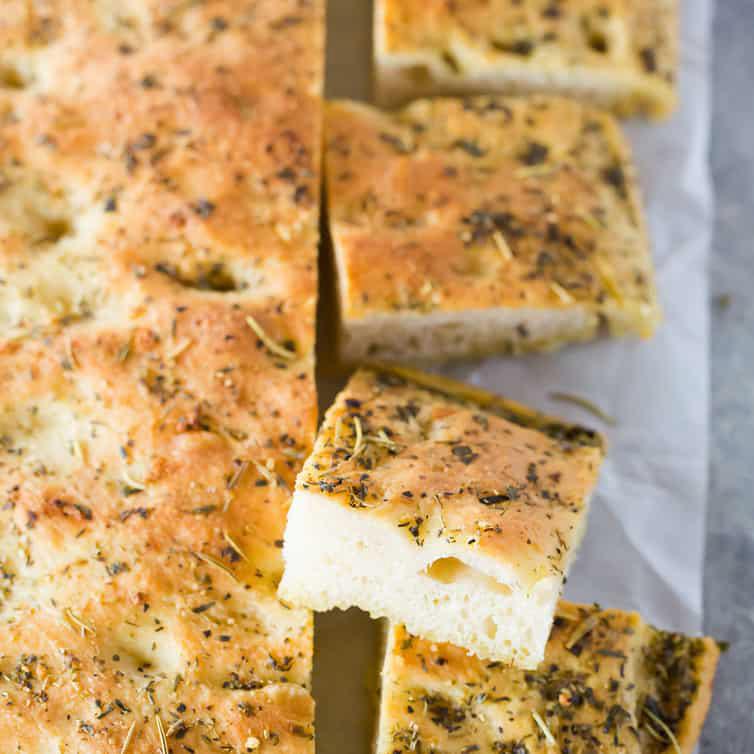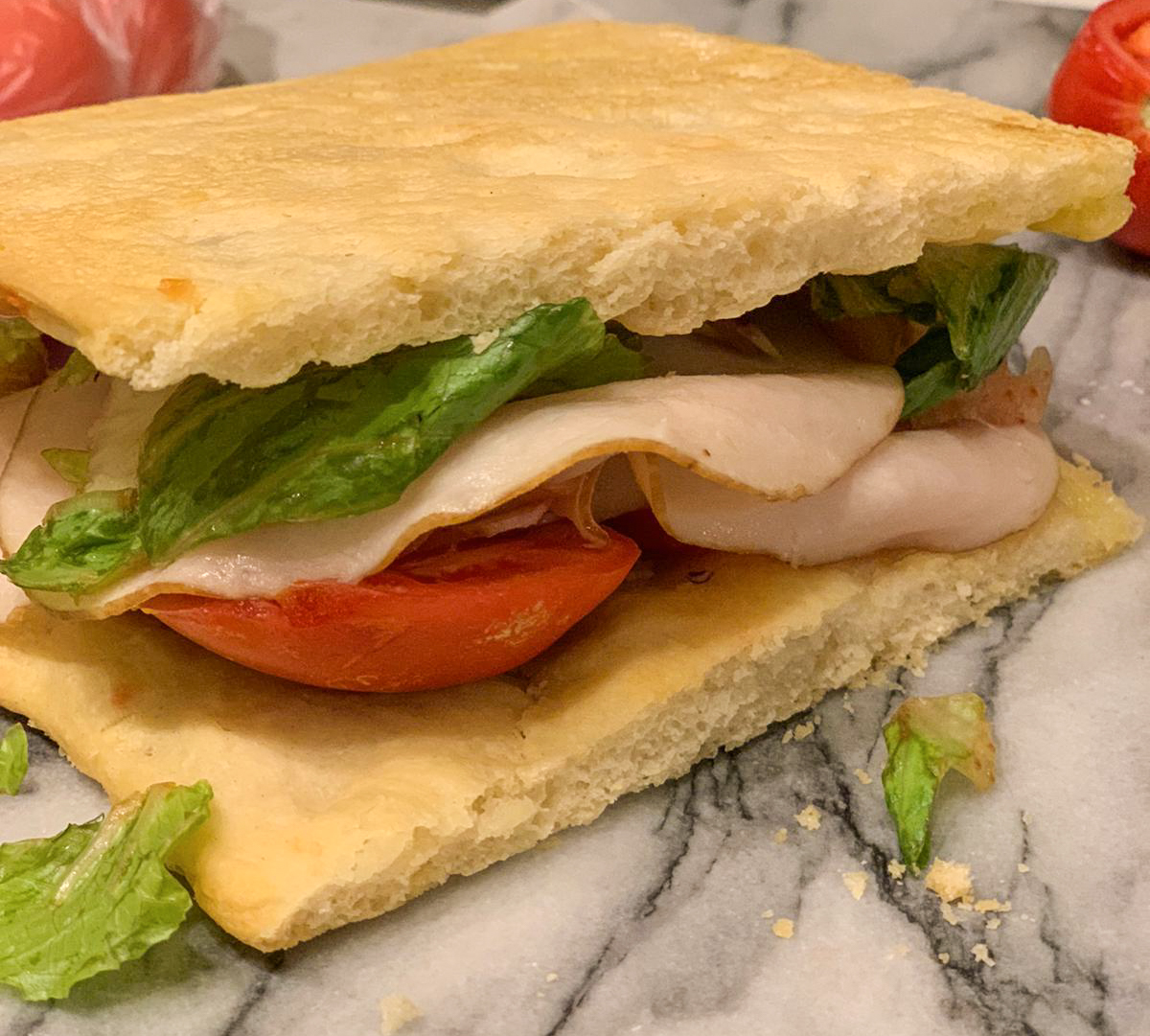Focaccia
Bread
In Ancient Rome, panis focacius was a flatbread baked on the hearth. The word is derived from the Latin focus meaning "hearth, place for baking”.
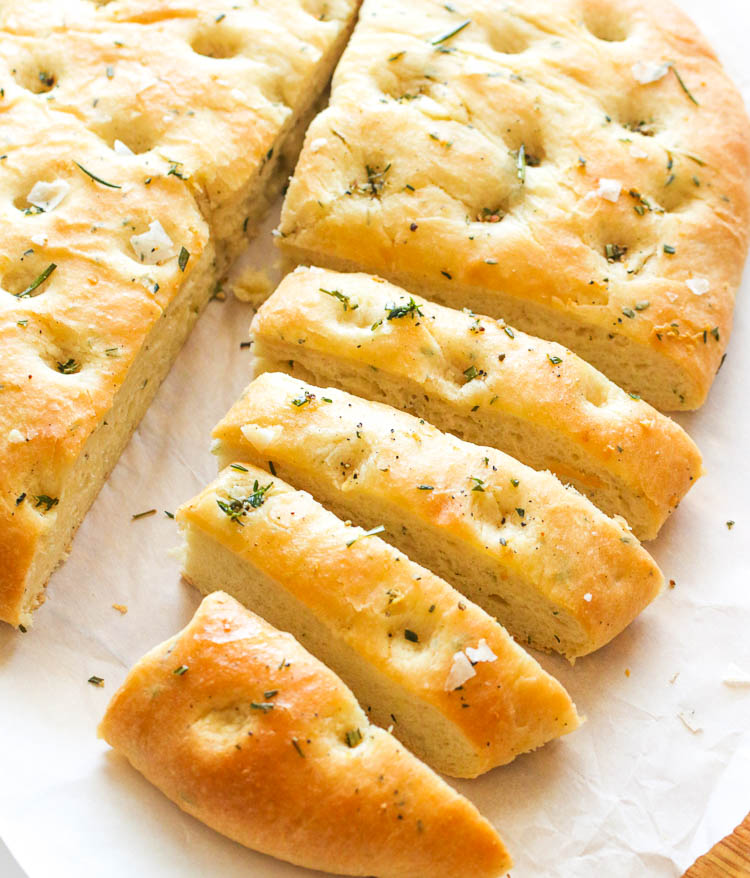
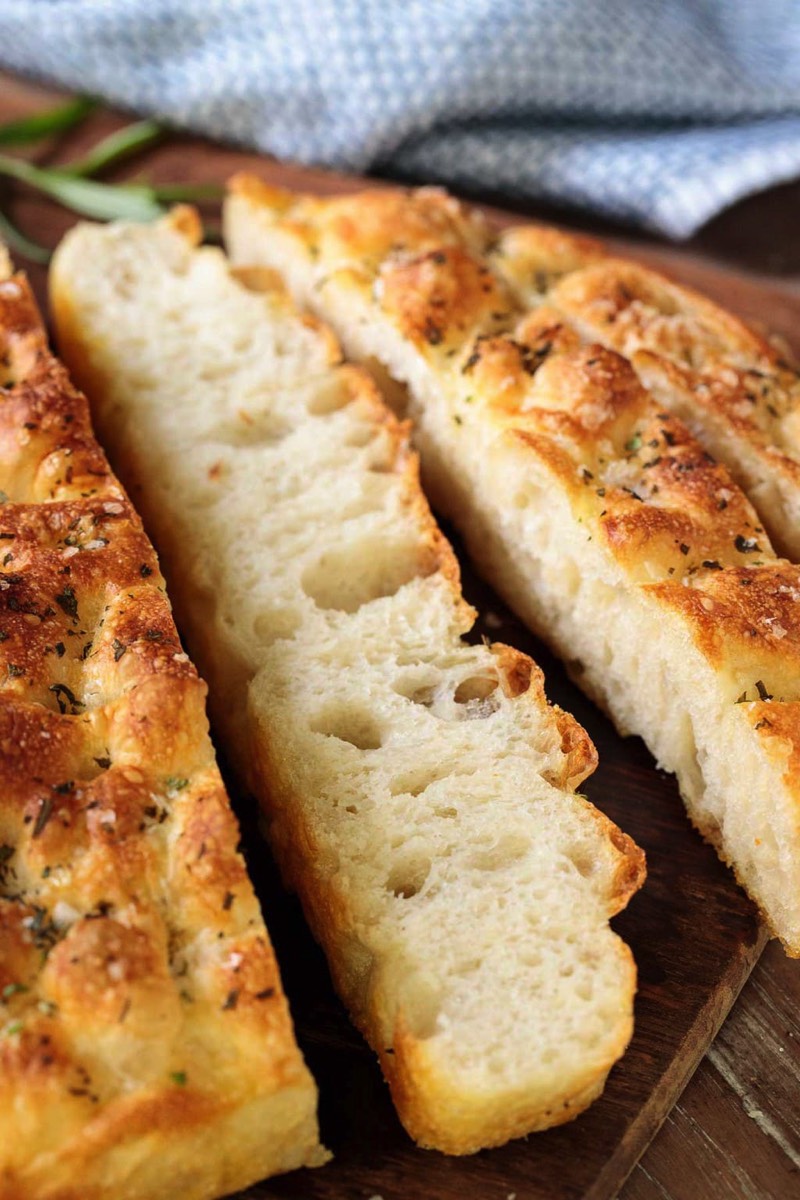
Focaccia is a flat oven-baked Italian bread product similar in style and texture to pizza dough. In Ancient Rome, panis focacius was a flatbread baked on the hearth. The word is derived from the Latin focus meaning "hearth, place for baking". The basic recipe is thought by some to have originated with the Etruscans, but today it is widely associated with Ligurian cuisine.
As the tradition spread, the different dialects and diverse local ingredients resulted in a large variety of bread (some may even be considered cake). Due to the number of small towns and hamlets dotting the coast of Liguria, the focaccia recipe has fragmented into countless variations (from the biscuit-hard focaccia di Camogli to the oily softness of the one made in Voltri), with some bearing little resemblance to its original form. The most extreme example is a specialty called focaccia col formaggio ("focaccia with cheese") which is made in Recco, near Genoa. Other than the name, this Recco version bears no resemblance to other focaccia varieties, having a stracchino cheese filling sandwiched between two layers of paper-thin dough.
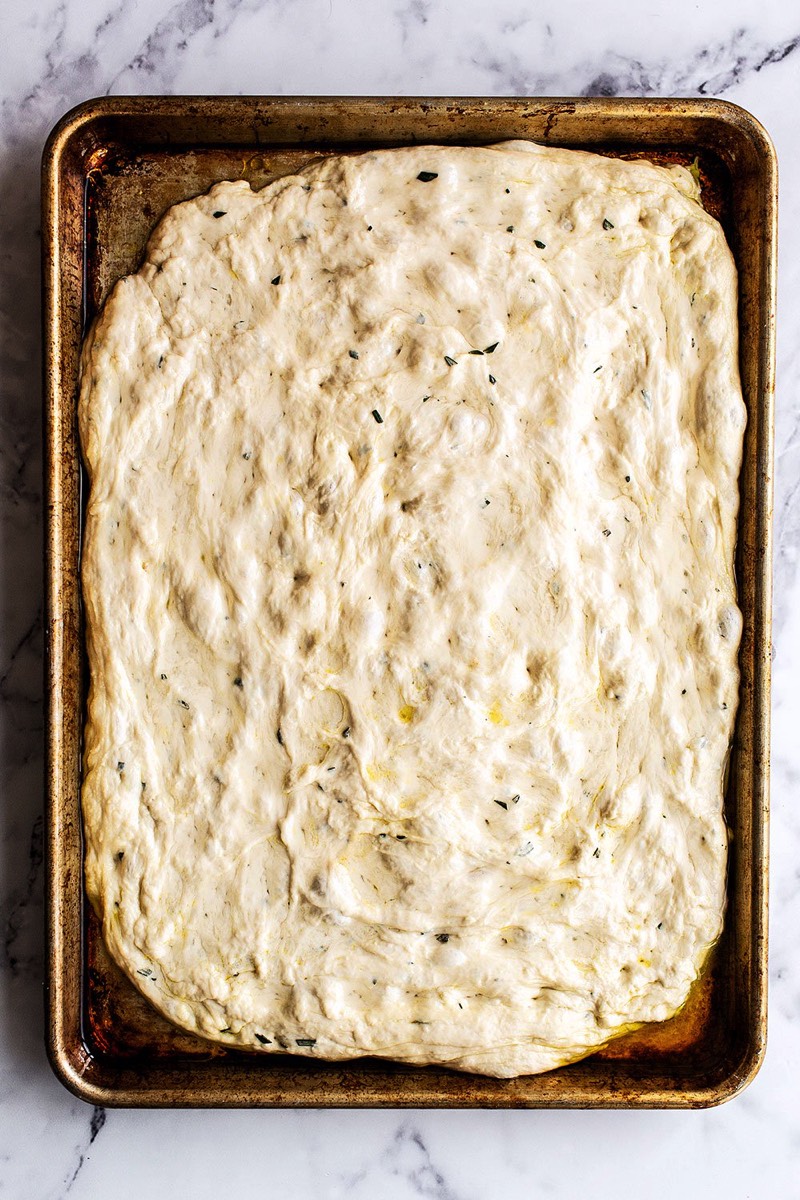
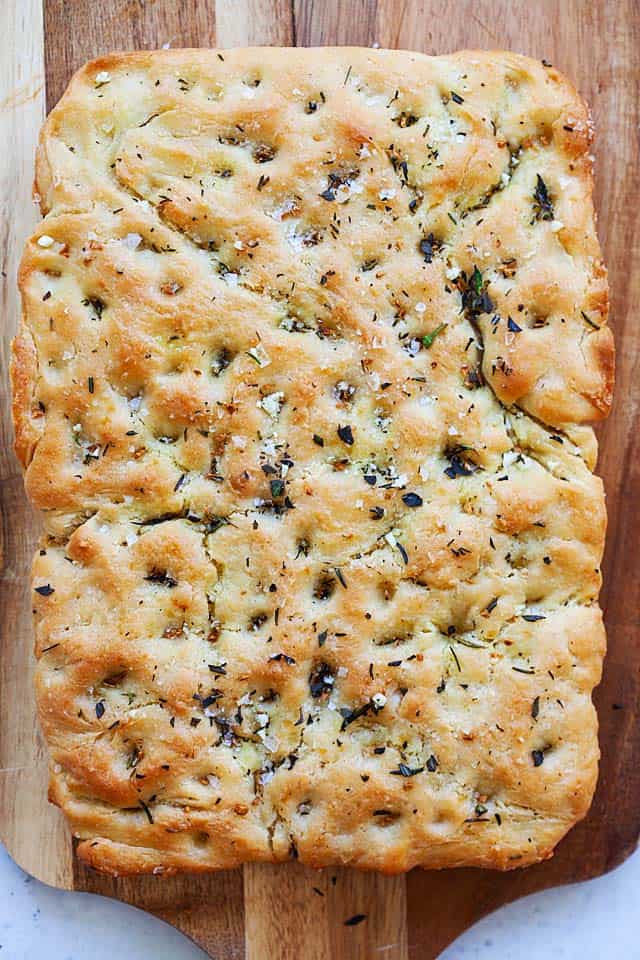
Focaccia, known and loved in Italy and abroad, is no other than yeasted flatbread. Early versions were cooked on the hearth of a hot fire, or on a heated tile or earthenware disk, like the related flatbreads. Bakers often puncture the bread with a knife to relieve bubbling on the surface of the bread. Also common is the practice of dotting the bread. This creates multiple wells in the bread by using a finger or the handle of a utensil to poke the unbaked dough. As a way to preserve moisture in the bread, olive oil is then spread over the dough, by hand or with a brush prior to rising and baking.
Many regions of Italy have an inventive range of flavorings they add to their focaccia. For many centuries it has had an association with Christmas Eve and Epiphany. In the Italian context, one thing is obvious, namely that the addition of topping to plain focaccia would result in a kind of pizza. However, apart from this aspect, Italian focaccia has branched out in various directions. Savory versions are more familiar here in the United States, they can contain olive oil, rosemary, sage, garlic, cheeses, and onion. There are also sweet recipes of focaccia containing eggs, honey, raisins, anise, sugar, and lemon or orange peel. These enrichments make the product so different from plain bread that in at least one place in Italy through history it escaped a tax placed on bread.
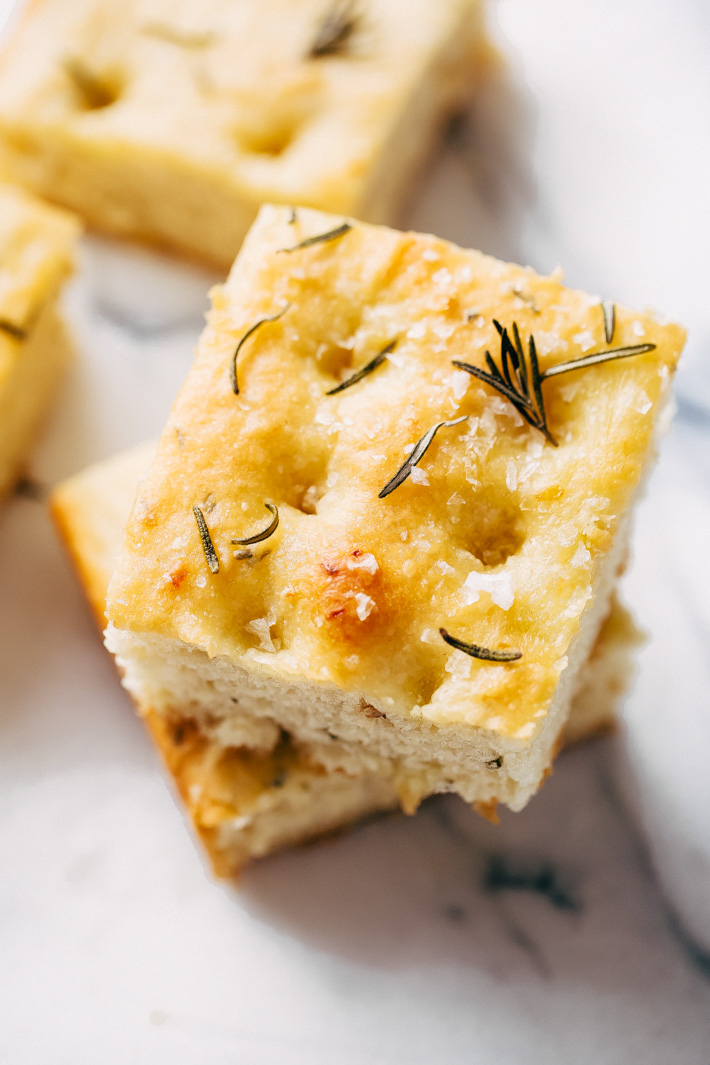
Various versions of this Italian bread can also be found in other parts of the world. In Burgundy, focaccia is called foisse or fouaisse, in other areas of France it is known as fougasse. In Argentina, it is widely consumed under the name fugazza. The Spanish call it hogaza. Today we enjoy this versatile bread alone as a snack or light meal or on the side complimenting a full-bodied Italian meal.
